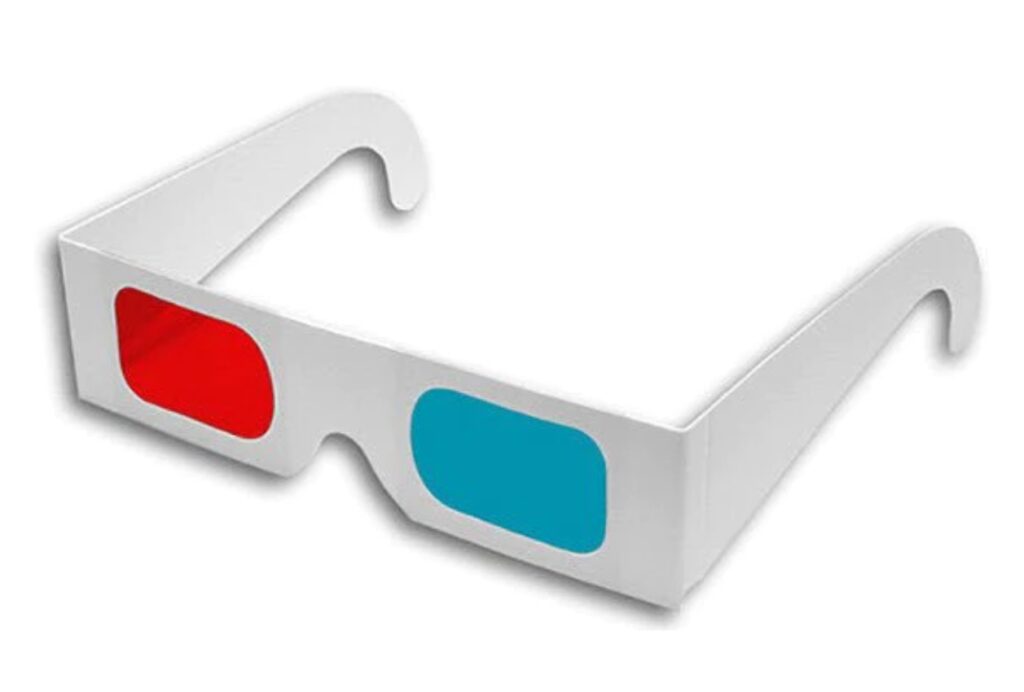 Do you remember the old 3D glasses that had a blue lens on one side and a red lens on the other? I was watching a show one time and two of the main characters were watching a 3D movie while wearing those old glasses. One character said “Wow! This 3D is amazing!” The camera panned over to the other character who only had one eye and was moving the glasses back and forth saying, “Mine aren’t working.”
Do you remember the old 3D glasses that had a blue lens on one side and a red lens on the other? I was watching a show one time and two of the main characters were watching a 3D movie while wearing those old glasses. One character said “Wow! This 3D is amazing!” The camera panned over to the other character who only had one eye and was moving the glasses back and forth saying, “Mine aren’t working.”
Have you ever thought about that? Those glasses only give you the correct view if you are looking through both lenses at the same time. If you only look through one lens, you won’t see the picture properly.
The same is true for how we others. We have to view people with a lens created by the commandments of God, but we simultaneously must have a view that is created by grace. Let’s look at how these two lens work together to give us a Godly view.
The blue lens:
Our God is a God of commandments. Under the Old Covenant, the Israelites had over 600 commandments given to them by God. And deviation from God’s commands was a serious issue that required a sacrifice to atone. Under the New Covenant, Christ is the once-and-for-all sacrifice that continually atones for sins, but we still have commandments that we are expected to follow.
“If you keep my commandments, you will abide in my love, just as I have kept my Father’s commandments and abide in His love.” John 15:10
The Word of God makes clear what is right and what is wrong. We must hold fast to its teachings and allow Scripture to be the lens that shows sin for what it is.
The red lens:
Our God is also a God of mercy, compassion, and grace. Much of Jesus’ teachings were on how to be gracious in how we view and treat others. Remove the log before you remove the speck, forgive others so that you will be forgiven, judge not lest you be judged. God stated through Hosea in the Old Testament, and then is repeated by Jesus in the New Testament:
“I desire mercy, and not sacrifice.” (Hosea 6:6, Matt 9:13)
There is a song that well describes how God’s love and grace shapes this lens. It is entitled “He Looked Beyond My Fault and Saw My Need.” The title really says it all. We all have faults; but instead of just seeing the short comings, Christ looked past that to see our needs. Christ’s love needs to be the lens that makes us look beyond others’ faults and see their needs.
Christ perfectly demonstrated how to use both lenses when the Jewish leaders brought before him a woman who was clearly guilty of adultery. He recognized the sin in her life (and the sin that was happening with the Jewish leaders right then). Rather than bringing down on her the clear punishment that she deserved, Jesus said “Has no one condemned you?…Neither do I condemn you. Go, and from now on sin no more” (John 8). To the woman, he never said, “It’s not big deal,” or “You do you.” Instead he offered mercy by not condemning her (red lens) but also took a stand that what she was doing was wrong by saying to do it no more (blue lens).
When we only have one lens we either become too judgmental based on the law because we have no grace or we become too tolerant of sin because we have no standard. Let’s look at people with both eyes open and have the Godly perspective that recognizes sin for what it is, but also looks beyond the faults to see the needs.

